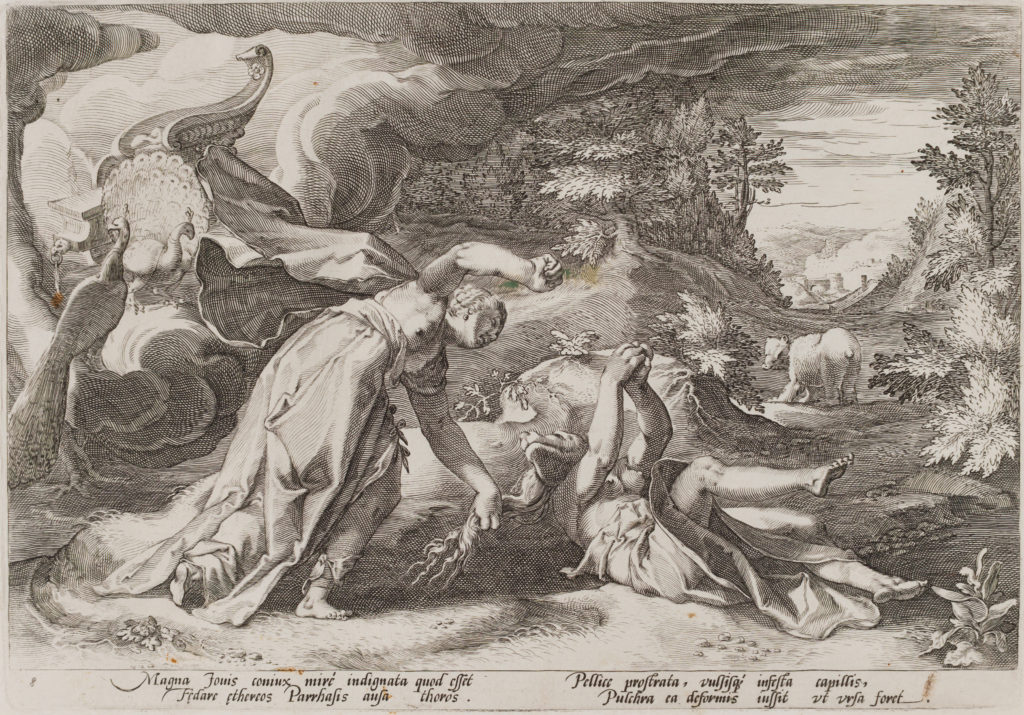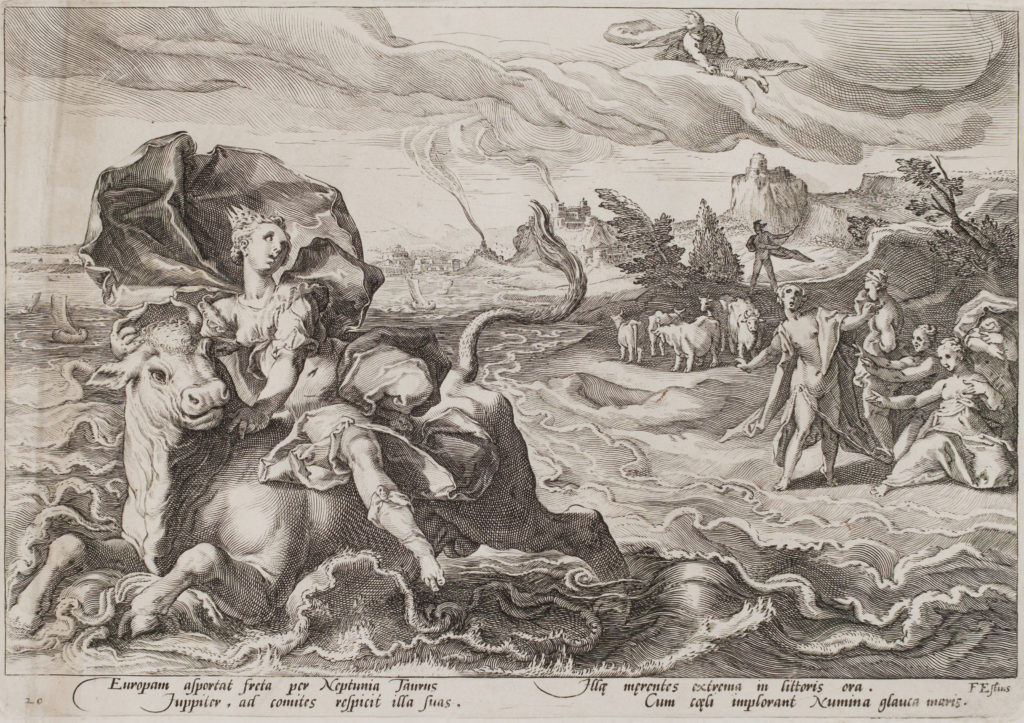Daphne Changed into a Tree, from the series Ovid's Metamorphoses
Gift of Charles Pendexter
1997.2.14During his lifetime, the Dutch engraver Hendrick Goltzius was widely recognized as the leading printmaker of the day, an innovative master of the medium. Unfortunately, one of Goltzius’s most ambitious projects—a plan to illustrate all of Ovid’s Metamorphoses with three hundred illustrations (twenty per book)—never came to completion. He did design all forty scenes for Books I and II, along with several others for Books III and IV. Each engraving illustrates a separate mythological scene drawn from the lengthy Latin poem, which was composed in the first century CE and retells more than 250 myths. The Metamorphoses remains one of the best guides to ancient Greek and Roman mythology and regularly features in classical curricula of America. Goltzius’s illustrations have long been valued by collectors for imaginatively bringing these myths to life.
Among the designs created by Goltzius were a number featuring the god Apollo, from Book I of the Metamorphoses. In one such scene, the youthful god fells the horrid serpent Python with a thousand arrows. Having just released the string of his longbow, Apollo steps lightly in a variation of the posture of the famous Apollo Belvedere sculpture that Goltzius had studied in Rome. Another composition, depicting the myth of Apollo and Daphne, is closely related. Goltzius’s composition adheres closely to Ovid’s version of the tale. The top right shows Apollo taunting Cupid who, flying above, prepares to demonstrate his power with the bow and aims his fateful golden arrow at the too confident young god. At once the winged child hits the only target that Apollo himself could never hit: the god himself. The golden arrow finds its mark and enflames Apollo with a hopeless love for the chaste nymph Daphne, whom Cupid has struck with a lead-tipped arrow causing her to despise her divine suitor. The center holds an ingeniously detailed culmination of Apollo’s amorous pursuit: his left arm reaches around behind Daphne’s body just as her fingertips transform into tender branches. An aureole of leaves, like a feathered headdress, crowns Daphne’s head. Smiling in the belief that he has captured his love, Apollo does not yet realize that she has escaped him.



